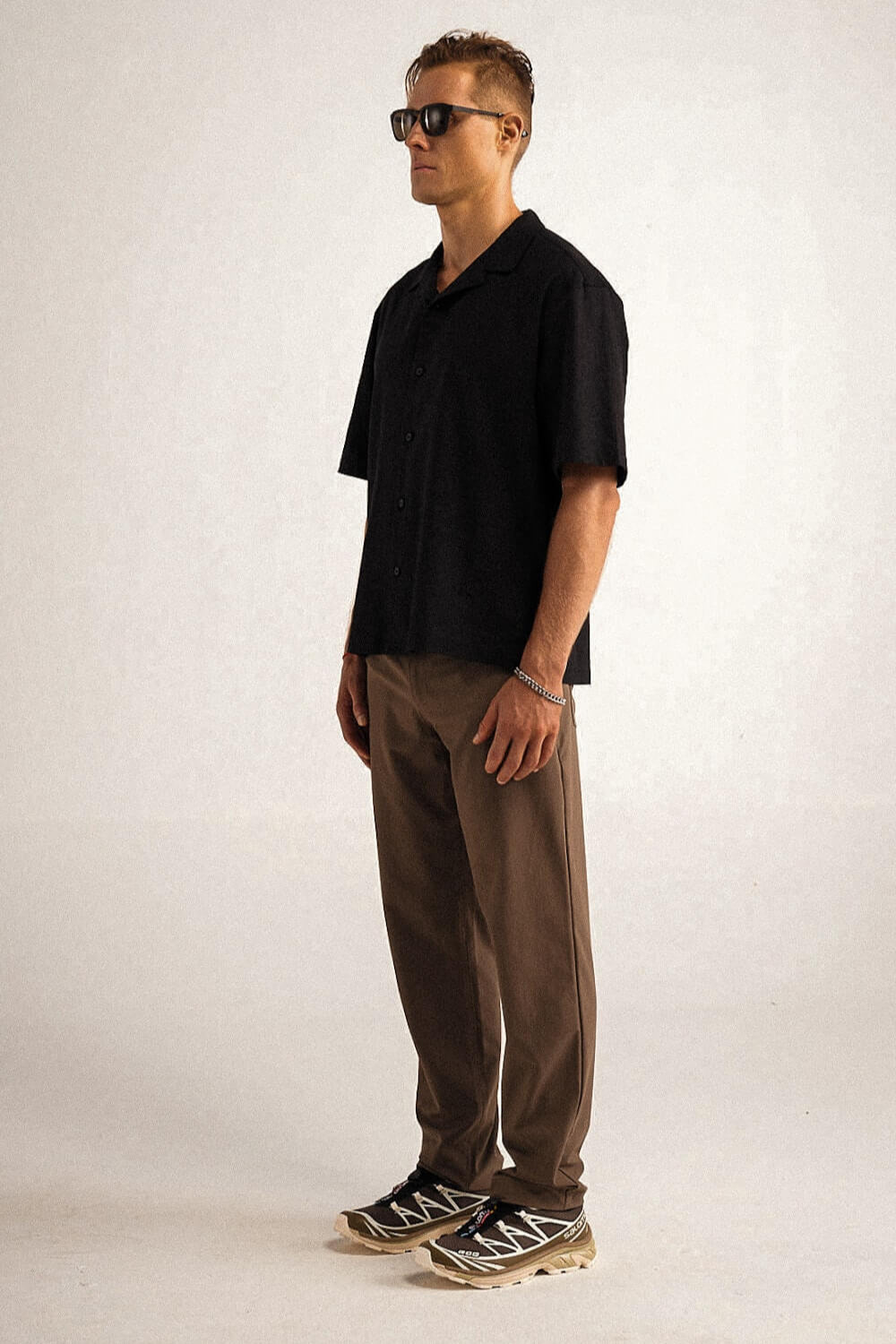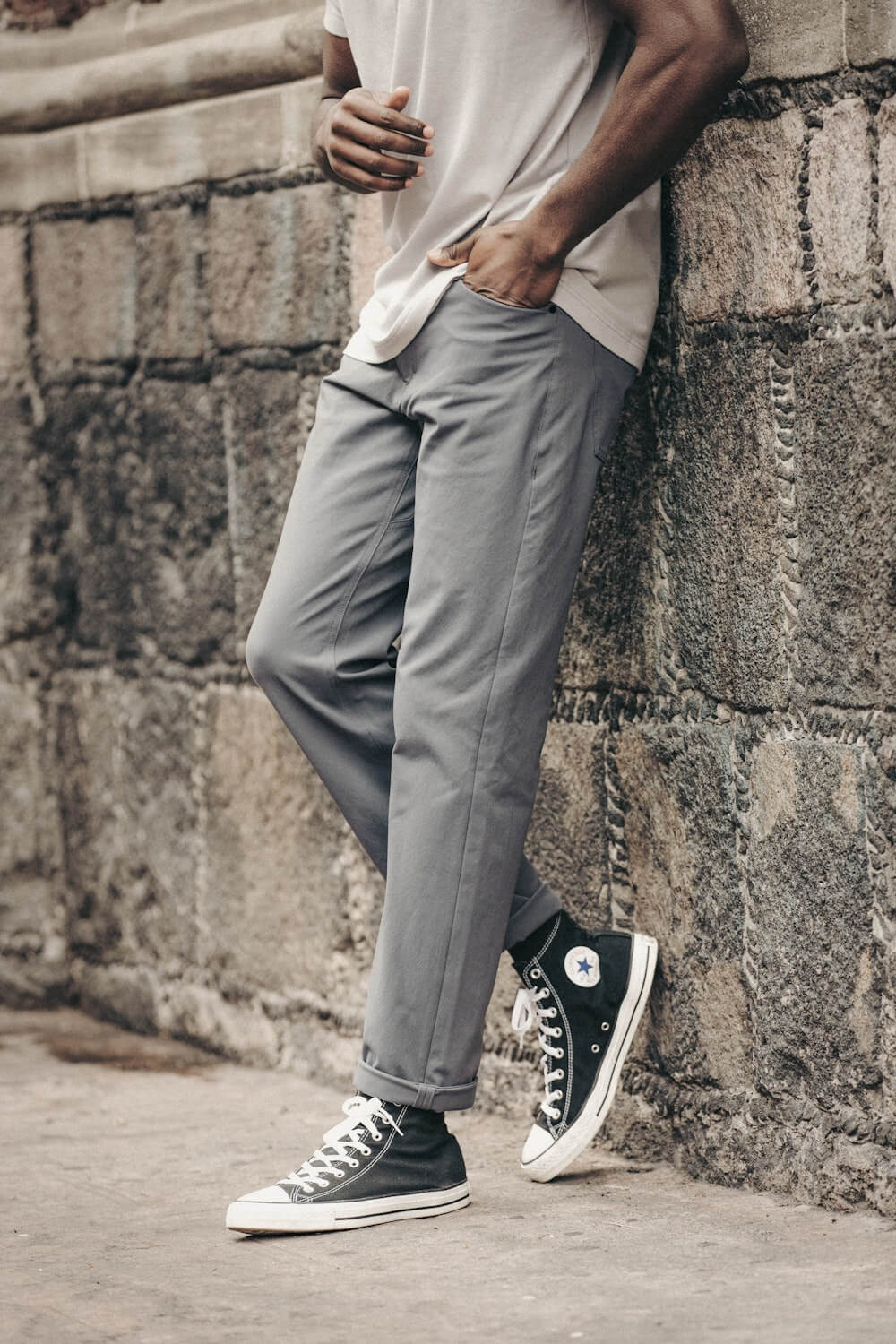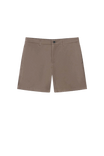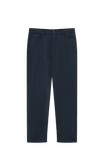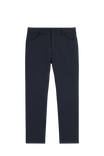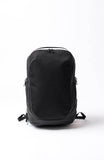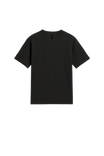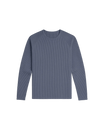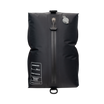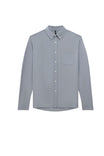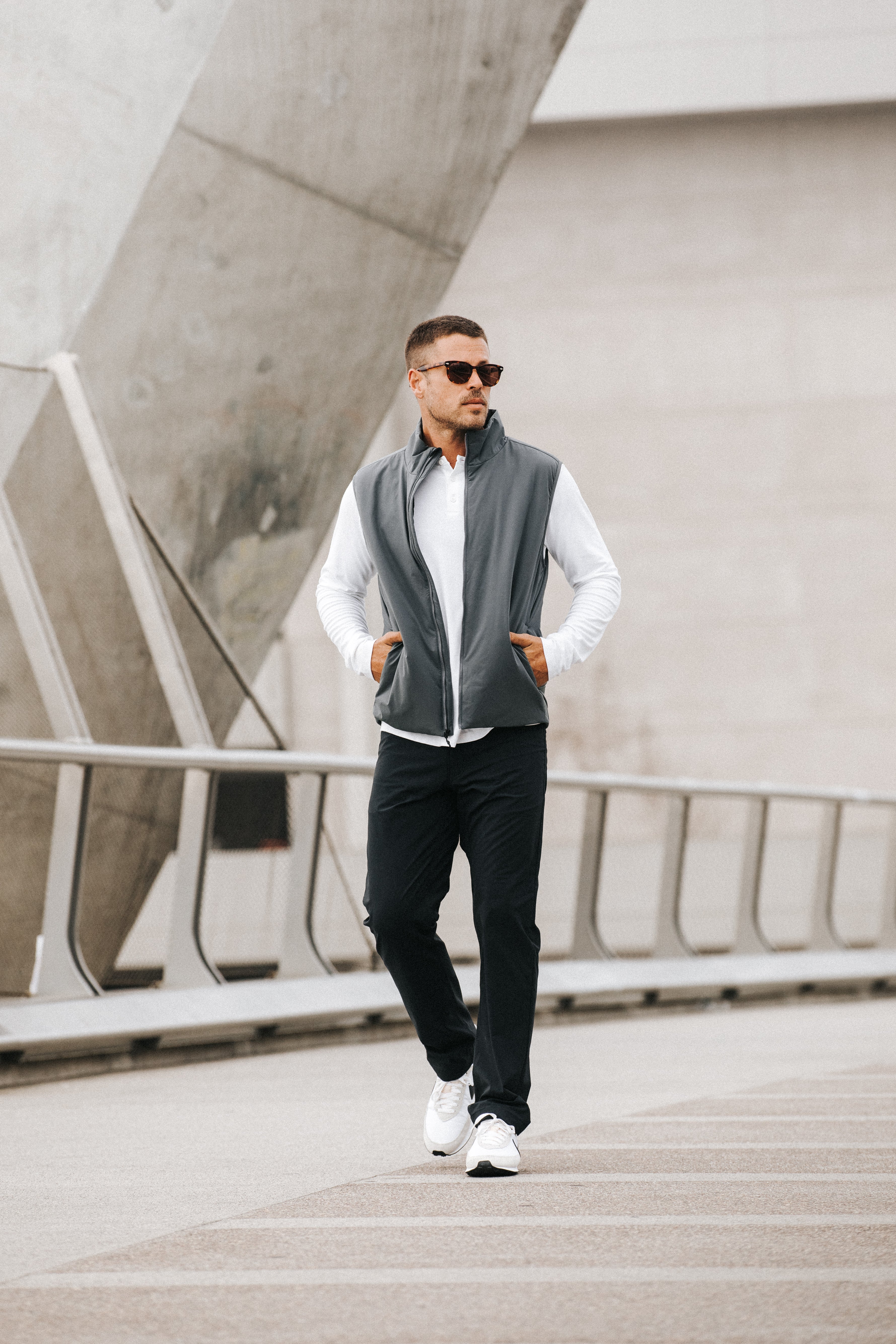When planning a trip, choosing the right attire is crucial for comfort and convenience. Among the tons of options available, identifying the best fabrics for travel can make all the difference. These materials not only ensure you remain comfortable during long journeys but also resist wrinkles and adapt to varying climates. In this article, we'll delve into the top choices and benefits of the best fabrics for travel clothes.

The Most Popular Materials For Travel Clothing
Throughout history, travel clothing fabrics have evolved, reflecting societal needs and technological advancements. From traditional wool and linen to modern synthetics like nylon and polyester, the journey has been transformative. Today, all the fabrics for travel might divided into a few categories based on their origin:
- Synthetic Fabrics: Materials like polyester and nylon have been popular due to their durability, lightweight nature, and quick-drying capabilities. They are commonly used in outdoor and activewear suitable for travel.
- Merino Wool: This natural fiber gained traction for its unique ability to regulate temperature, resist odor, and wick moisture, making it a favorite for both cold and warm climates.
- Natural Blends: Fabrics blending cotton with synthetics have been popular for achieving a balance of comfort and functionality.
- Eco-friendly Materials: With the rise of environmental consciousness, materials like Tencel, bamboo, and recycled polyester have seen increased interest.
- Performance Fabrics: These are materials enhanced for specific functions, such as UV protection, moisture-wicking, or anti-microbial properties, and have gained prominence in travel and sportswear lines.

Comparing Fabrics For Travel Clothing
Now, let's compare the specific fabrics of each group and its properties to get to know which one is the best choice for your destination climate and activities:
- Synthetic Fabrics
Synthetic materials have long been a staple in the world of travel clothing due to their versatility and resilience. These fabrics are typically engineered to offer specific advantages, especially for travelers on the go.
- Polyester: Lightweight, durable, and resistant to shrinking or stretching and abrasion.
- Nylon: Nylon is a great fabric for wrinkle resistance because of its complex weave. Known for its strength and elasticity, it's also fast-drying and lightweight. Nylon blends also provide ample stretch and resist wrinkles as you travel.
- Spandex: Offers exceptional elasticity and is often blended with other materials to provide stretch.
Features: Synthetic fabrics are often moisture-wicking, quick-drying, and resistant to wrinkles. They're ideal for travelers as they pack compactly and maintain their shape even after long hours of wear.

- Merino Wool
Originating from the Merino sheep, this natural fiber is nothing short of a marvel in the textile industry. Its unique properties make it an all-season favorite for travel enthusiasts.
- Fine Merino Wool: Used in lightweight garments and offers a soft touch.
- Coarser Merino Wool: More durable and typically used in heavier clothing items.
Features: Merino wool is renowned for its temperature-regulating capabilities, allowing wearers to stay warm in cold conditions and cool in hotter climates. Additionally, its natural moisture-wicking and odor-resistant properties make it perfect for extended travel without frequent washing.

- Natural/Synthetic Blends
Combining the best of natural and synthetic fibers, these blends aim to deliver comfort while retaining functionality. They provide the tactile benefits of natural fibers with the performance advantages of synthetics.
- Cotton-Polyester Blend: Combines the softness of cotton with the strength and wrinkle-free benefits of polyester.
- Cotton-Spandex Blend: Provides the softness of cotton with added stretch from spandex.
Features: Natural blends are breathable, comfortable against the skin, and often have enhanced durability and wrinkle resistance due to the synthetic components.

- Eco-friendly Materials
With the rise in environmental awareness, sustainable and eco-friendly fabrics have gained traction in the travel clothing industry. They offer the dual benefits of being kind to the environment while providing functional advantages to the wearer.
- Tencel (Lyocell): Made from wood cellulose, it's soft, breathable, and biodegradable. Tencell feels silky smooth, quick-drying and wrinkle-resistant while being environmentally friendly. But it doesn't wick moisture as effectively as polyester or nylon.
- Bamboo: Naturally antibacterial and offers natural UV protection. Bamboo Viscose blend has temperature regulating and moisture-wicking properties.
- Recycled Polyester: Uses recycled plastic bottles, reducing waste and environmental impact while it feels soft and breathable.
Features: Eco-friendly materials often have natural anti-microbial and moisture-wicking properties. They're breathable, comfortable, and leave a reduced carbon footprint.
- Performance Fabrics
These are materials that have been specially engineered or treated to provide specific benefits, often catering to specialized needs of travelers or athletes.
- Coolmax: A polyester blend known for its moisture-wicking capabilities.
- Gore-Tex: Waterproof yet breathable, ideal for outerwear. Allows moisture to escape while being waterproof.
- UV Protective Fabrics: Treated to offer protection against harmful UV rays.
Features: Performance fabrics are designed for specific conditions, whether it's high-intensity activities, protection against elements, or special environments. They prioritize functionality and often have enhanced durability and performance features tailored to specific needs.
- Natural Fabrics
These are textiles sourced directly from nature, offering both comfort and functionality, especially valuable to travelers seeking organic, breathable options.
- Cotton: A versatile material known for its softness, with varieties like Egyptian and Pima Cotton providing a touch of luxury.
- Hemp: Valued for its durability and eco-friendliness, with organic hemp emphasizing sustainable travel wear.
- Silk: Offers a natural sheen and temperature-regulating properties, with standout versions like Mulberry and Tussah Silk.
- Wool: Known for insulation, moisture-wicking, and odor-resistance, with luxurious subtypes like Cashmere and Mohair.
- Linen: Made from flax plants, is an excellent choice for travel due to its breathability, comfort, and ability to stay cool in hot climates, making it a practical and stylish option for adventurers.

Features: Natural fabrics in travel attire prioritize comfort, breathability, and adaptability to various climates. Their organic nature makes them skin-friendly, and their inherent properties often align with travelers' needs, from moisture management to temperature regulation.
Fabrics for Travel in Cold Weather
Venturing into colder climates demands clothing that not only insulates but also remains breathable, ensuring travelers stay warm without feeling stifled. The right fabric can make all the difference in these chilly conditions:
- Wool or Merino Wool: A natural insulator, wool can trap a significant amount of air, providing warmth. Merino wool, in particular, offers the added benefit of moisture-wicking and odor resistance.
- Cashmere: Softer and three times more insulating than regular wool, cashmere provides exceptional warmth without the bulk.
- Down: Used in jackets and vests, down offers superior insulation by trapping air, although it's essential to ensure it remains dry for optimal performance.
- Fleece: Fleece is lighter than wool, provides better insulation and warmth by trapping air in its fibers, making it an excellent mid-layer. Also, it stays warm when wet, and dries quickly, but is not waterproof at all.
- Materials with Synthetic Insulation: Materials like PrimaLoft and Thinsulate offer warmth even when wet, making them reliable alternatives to natural down.

By combining moisture-wicking properties with insulation, you can stay dry and toasty, making your journeys in frosty conditions all the more enjoyable. So clothes from these materials are a must on your winter packing list.
Fabrics for Travel in Hot Weather
When traveling to warmer destinations, the right fabric can play a pivotal role in ensuring comfort by promoting breathability and moisture management. For hot weather travel, these fabrics stand out:
- Linen: Renowned for its breathability, linen allows for excellent air circulation, helping wearers stay cool even in scorching temperatures.
- Cotton: A classic choice, cotton is soft and breathable, with its loose weave allowing for airflow and moisture absorption.
- Madras: A lightweight cotton fabric, madras is both breathable and colorful, making it a popular choice for summer attire.
- Seersucker: Its puckered surface allows it to sit away from the skin, promoting air circulation and making it a go-to for hot climates.
The right fabric in hot weather travel can make the difference between feeling sticky and uncomfortable or fresh and at ease, enhancing the overall travel experience.

Now, let's explore the answers to the most commonly asked questions about fabrics for travel clothes.
What Material Doesn't Wrinkle For Travel
For a neat appearance during travel, polyester, nylon, and fabrics blended with spandex or lycra are top choices due to their wrinkle-resistant properties. Additionally, treated "wrinkle-free" natural fabrics are merino wool that easily returns to its natural shape after washing or being rolled and cotton that offers a smooth look, reducing the need for ironing.
At Western Rise, we offer a plethora of wrinkle-free clothes that are blended with nylon for superior wrinkle resistance. One of the greatest options for travel pants we offer is the Diversion Pant, made out of a nylon blend. This blend is lightweight and breathable, giving you room as it regulates the temperature changes your body endures during travel.

If the weather is warmer where you are traveling - or it is simply the middle of summer you may want to look at our Boundless Short. These shorts are made from a divine blend of nylon that provides that much-needed stretch and forgiveness while still looking presentable to elevate your airport style.

If you prefer clothes from natural material but still want them to have no stain properties, merino wool collection by Western Rise is a good choice. It still feels luxurious like cashmere while providing temperature regulation that keeps you comfortable on your journey. The one of the options from Merino Wool, is our StrongCore Merino Tee is the essential t-shirt to wear while traveling due to its ability to resist odors, stains, and wrinkles all in one.
What Are The Coolest And Most Breathable Fabrics For Travel?
When seeking travel clothes that offer maximum coolness and breathability, linen and cotton stand out as top choices. These natural fabrics allow for excellent air circulation, ensuring travelers remain comfortable and refreshed in warmer climates.
So you can opt for a cotton travel short sleeve with odor-resistant and moisture-wicking properties as well.
What Are Odor-Resistant Fabrics for Travel?
For travelers seeking freshness on the go, certain fabrics excel in odor resistance. Merino wool and bamboo naturally fend off bacteria, ensuring minimized odor buildup. Many travel garments use synthetic blends treated with antimicrobial agents, while others, like Tencel and silver-infused fabrics, incorporate inherent properties to combat odors. These materials are designed to keep wearers feeling fresh during extended journeys.
Travel polo from merino wool by Western Rise with odor-resistant and temperature regulation properties is designed specifically for active and hot adventures making them more comfortable.

Eco-Friendly Fabrics Suitable For Travel
Recycled fabrics made from post-consumer waste, reducing environmental impact and promoting sustainable fashion are also oftentimes preferred choice by travelers like:
- Organic Cotton: Grown without harmful pesticides and chemicals, offering a soft feel.
- Tencel/Lyocell: Derived from sustainably sourced wood, providing a smooth texture and moisture-wicking properties.
- Hemp: Requires minimal water and pesticides, resulting in a durable and breathable fabric.
- Linen: Derived from natural flax plants, linen is perfect for travel, offering breathability, durability, and a stylish, relaxed look that adapts seamlessly to various destinations.
The Worst Fabrics for Travel
While many fabrics boast qualities suitable for travel, there are others that might hinder your journey's comfort and convenience.
- Vinyl or Unlined Leather: Heavy and non-breathable, making them uncomfortable in warmer climates.
- Satin and Silk: Delicate and prone to staining, often require special cleaning.
- Velvet: Takes up significant suitcase space and lacks versatility for varying temperatures.
- Bamboo: Takes forever to dry and can be less durable, making it impractical for constant packing and unpacking.
- Rayon: Wrinkles easily, takes a long time to dry, and often requires delicate handling, which is not always feasible on the go.
- Modal: Slow to dry and can lose shape easily, making it less reliable for those constantly on the move
- 100% Cotton: Retains moisture, leading to discomfort in humid conditions or during physical activities.
Tips for Choosing the Best Fabrics for Travel
- Understand Your Destination: Research the climate and cultural norms. This ensures weather-appropriate and culturally respectful attire.
- Consider Your Activities: If you're hiking, opt for durable and moisture-wicking fabrics. For beach destinations, breathable and quick-dry materials are ideal. Tailor your fabric choices to your planned activities.
- Prioritize Comfort: For prolonged sitting or walking, choose stretchy and breathable fabrics.
- Wrinkle Resistance: When building your travel capsule wardrobe, ppt for fabrics like polyester and cashmere that resist wrinkles.
- Quick Drying: Nylon and microfiber are great for their fast-drying properties.
- Lightweight & Packable: Fabrics like thin cotton make packing efficient.
- Odor Resistance: Fabrics like wool resist odors, useful in warm climates or limited laundry access.
- Versatility: Layering and mix-match capabilities reduce overpacking.
- Durability: For adventure trips, durable fabrics like nylon and denim are ideal.
- UV Protection: Consider UV protective clothing for sunny destinations.
- Moisture-Wicking: Merino wool and certain synthetics are perfect for humid climates.
- Easy Maintenance: Machine-washable fabrics are great for extended trips.
- Environmentally Friendly: Choose sustainable fabrics like organic cotton or bamboo.
- Check Reviews: Validate the comfort and practicality of travel-specific clothing.
- Test Before Travel: Wear new items before the trip to gauge comfort.
- Avoid Noisy Fabrics: Ensure your outfits don't produce disturbing rustling sounds.

Summary
Travel fabrics play a crucial role in ensuring comfort and convenience for travelers. We hope our guide on the best fabrics for travel clothes will help you in choosing the most comfortable clothes for any type of travel and destinations. Happy and comfortable travel!

